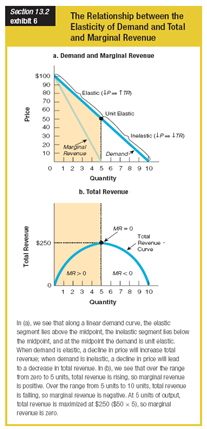Based on the graph for the relationship between elasticity of the demand and total revenue, total revenue is maximized ______.

a. when demand is unit elastic
b. when marginal revenue is increasing
c. when marginal revenue is maximized
d. when demand is inelastic
a. when demand is unit elastic
You might also like to view...
Suppose Erie Textiles can dispose of its waste "for free" by dumping it into a nearby river. While the firm benefits from dumping waste into the river, the waste reduces fish and bird reproduction. This causes damage to local fishermen and bird watchers. At a cost, Erie Textiles can filter out the toxins, in which case local fishermen and bird watchers will not suffer any damage. The relevant gains and losses (in thousands of dollars) for the three parties are listed below. WithFilterWithoutFilterGains to Erie$200$400Fisherman$180$50Bird Watchers$130$25 Suppose that Erie Textiles can only negotiate with one of the affected groups. Will Erie operate with a filter?
A. No, regardless of which group they negotiate with. B. Yes, if they negotiate with the Bird Watchers, but not if they negotiate with the Fishermen. C. Yes, if they negotiate with the Fishermen, but not if they negotiate with the Bird Watchers. D. Yes, regardless of which group they negotiate with.
How does the short-run equilibrium of a monopolistic competitor differ from a monopolist? How does it differ from a perfect competitor?
What will be an ideal response?
As more workers are hired, the marginal physical product of labor eventually declines because
A. of diseconomies of scale. B. less efficient workers are hired as the number of workers increases. C. the amount of capital each worker has to work with declines as the number of workers increases. D. workers do not work well together when the number of workers increases.
Related to the Economics in Practice on p. 630: The emigration of Jewish scientists from Germany to the United States in the late 1930s and early 1940s is an example of a(n) ________ in the United States.
A. decrease in disembodied technical change B. decrease in embodied technical change C. increase in physical capital D. increase in human capital